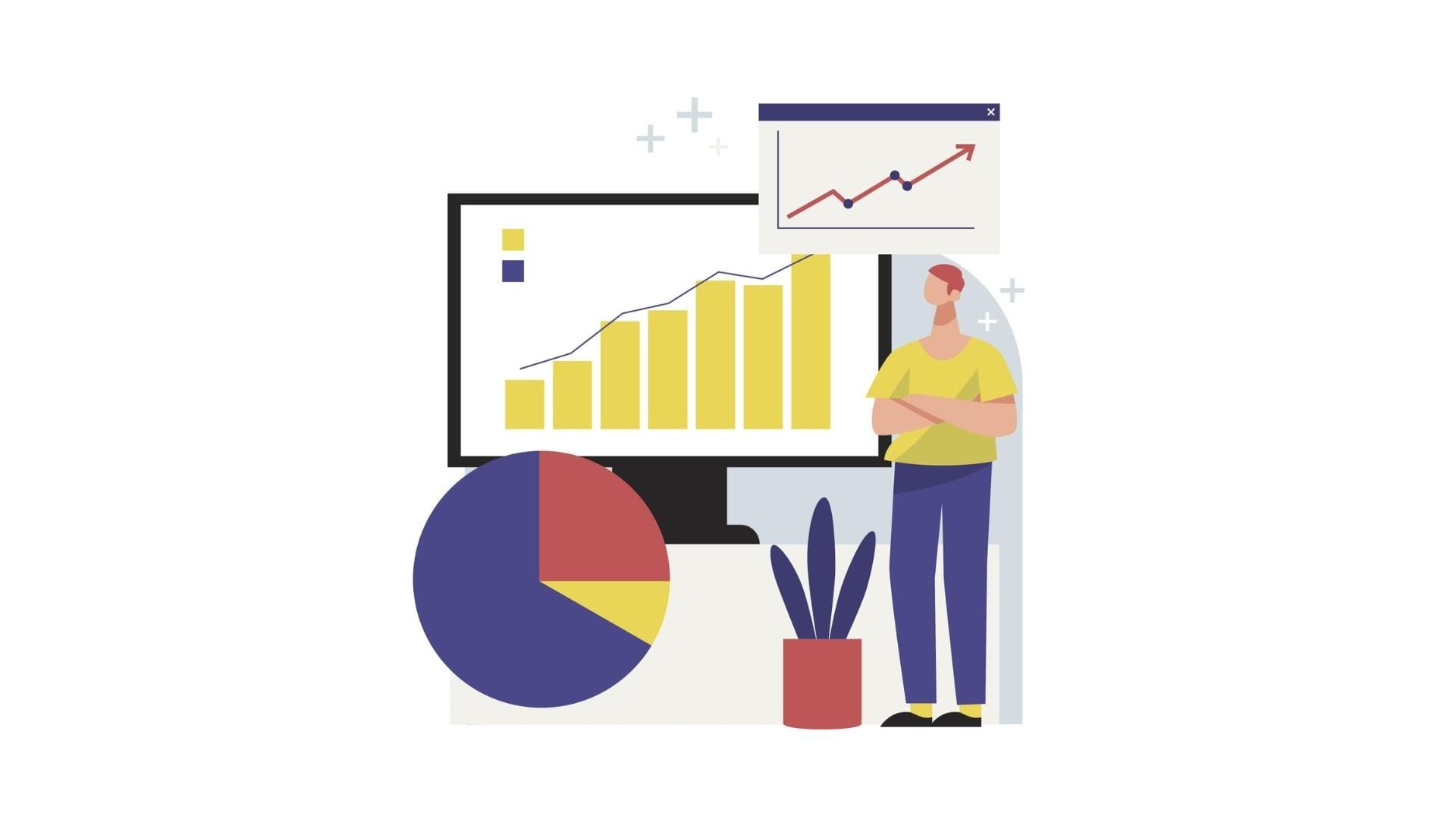Top 20 Marketing Automation Statistics and Trends for 2025
Discover 2025 marketing automation stats and trends! See how tremendously the market size of AI in the US has grown to $66.21 Billion USD in 2025!

If you’ve been paying attention to marketing over the past few years, you’ve probably noticed a shift—automation is becoming a big deal. And as we look ahead to 2025, it’s clear that marketing automation is not just a passing trend; it’s here to stay and grow. In fact, the numbers show it’s shaping the future of how brands connect with their customers.
From streamlining workflows to delivering personalized experiences at scale, marketing automation is changing the game. But what does the future really hold? In this post, we’re diving into the marketing automation stats and trends you’ll want to keep an eye on as we head into 2025. Understanding these trends will help you stay ahead of the curve and make smarter, data-driven decisions.
Top Marketing Automation Statistics
Let's take a quick look at some key marketing automation statistics that highlight its growth and the benefits businesses are seeing. These stats show the growing impact of marketing automation on how businesses engage with customers and drive results.
Global marketing automation market revenue by Statista
- The global marketing automation market was valued at approximately $6.76 billion in 2023. That’s already a solid number, but get this—it’s projected to reach a whopping $25.41 billion by 2033, growing at a CAGR of 14.16% during this period.
- In the United States, advertising companies are also jumping on the marketing automation bandwagon. The market value for automation in advertising is expected to grow from $1 billion in 2024 to $3.83 billion by 2034, achieving a CAGR of 14.3%.
- The artificial intelligence (AI) market is also on fire. The Global Artificial Intelligence (AI) Market Size is projected to grow from USD 621.19 billion in 2024 to USD 2,740.46 billion by 2032, exhibiting a CAGR of 20.4% during the forecast period.
- Marketing automation returns $5.44 for every dollar spent.
- On average, 56% of companies are currently using Marketing automation. 40% of B2B companies are planning to adopt the technology.
Benefits of Marketing Automation
Let’s talk about the benefits of marketing automation and why it’s such a game-changer for businesses. Marketing automation can seriously level up your strategy. Whether you’re looking to streamline tasks, improve your targeting, or get better ROI, automation offers a ton of benefits.
And to back that up, we’ve got some key stats that really show just how much of an impact it can have on your business.
- 9% of marketers have fully automated their process, while 32% have mostly automated.
Source: Link
- Increased Sales Productivity: Studies have shown that marketing automation software can lead to a 14.5% increase in sales productivity.
- Improved Lead Generation: Approximately 80% of marketing automation users report improved lead generation.
- Higher Conversion Rates: About 77% of marketers using automation see an increase in conversions
Source: Ascend2
Source: GetResponse
How Marketing Automation Impacts Lead Generation
Let’s dive into how businesses are using marketing automation and what the latest stats reveal about its growing role in their strategies. These numbers give a clear picture of how companies are leveraging AI-powered tools to boost their marketing efforts. Here are some key stats to highlight the current state of marketing automation:
Source: Link
- 44% of companies report strategic adoption of marketing automation. Adopters across industries show a clear trend to increase the level of automation.
- Email (63%), social media management (50%), and paid ads (40%) are the most reported areas for currently using marketing automation.
- Approximately 26% of companies plan to implement marketing automation technology in the future, highlighting a significant interest in adopting these technologies.
- 63% of marketers are planning to increase their marketing budgets.
- Almost 70% said they planned to increase their marketing automation budget.
Source: Ascend2
Email Marketing Automation Statistics
Email marketing remains a powerhouse in business strategies, and with automation, its effectiveness increases dramatically. Automation saves time, delivers personalized content, and fosters meaningful customer engagement, all while boosting efficiency. So, let’s take a look at some key stats that highlight how email marketing automation is transforming campaigns and driving results.
Source: Link
- According to marketers, email remains the key strategic channel (91% rated it important), followed by social media (83%).
- Global email users are projected to reach 4.89 billion in 2027.
- About 58% of businesses utilize email automation as part of their marketing strategy.
- In 2026, it is estimated that 392.5 billion emails will be sent and received daily worldwide.
- The global email marketing revenue is expected to hit $17.9 billion by 2027.
- The average open rate for email marketing campaigns stands at 25.10%, while automated emails achieve an impressive 42.1% open rate.
Social Media Automation Statistics
Social media automation has become essential for marketers seeking efficiency and effectiveness in their campaigns. Here are the latest statistics illustrating social media automation's impact and trends.
Source: Link
- 47% of marketers reported using social media automation, making it the second most automated channel.
- Six working hours can be saved weekly if the business automates its social media content and ads.
- Facebook has over 3 billion monthly active users and is the most-used social network worldwide.
- 41% of consumers have discovered a product on social media.
- About 74% of users report that marketing automation helps them save time, which is critical for managing multiple responsibilities
Source: Link
Marketing Automation Challenges
Marketing automation offers significant advantages but presents various challenges that organizations must navigate. Here are key statistics that reflect the common hurdles marketers face in implementing and optimizing marketing automation systems.
Source: Link
- 39% of marketers believe that insufficient training is a major obstacle, preventing them from fully utilizing their marketing automation tools.
- 24% of respondents indicate that insufficient data quality hampers their automation efforts, highlighting the importance of clean and reliable data for effective marketing strategies
- About 56% of marketers express doubts about their company's ability to keep up with innovations in marketing automation.
- Around 20% of companies struggle to find the right marketing automation tools that meet their specific needs.
Source: Link
Future Trends in Marketing Automation Statistics
As marketing automation continues to evolve, several key trends are shaping its future. Here are the latest statistics and insights highlighting the anticipated developments in this field.
- The global marketing automation market is projected to grow to $13.71 billion by 2030, reflecting a 12.9% compound annual growth rate (CAGR).
- The demand for marketing automation tools is expected to rise, with 91% of companies noting an increase in demand over the past two years. This trend underscores the importance of staying ahead in a rapidly changing digital landscape.
Conclusion
If you want your business to thrive in 2025, marketing automation is a must. It’s the key to helping both small businesses and large enterprises tackle common hurdles like repetitive tasks, poor lead generation, and missed sales opportunities. By automating these processes, you boost productivity, streamline workflows, and drive growth—things that are critical for sales leaders, founders, and CEOs looking to stay competitive.
At Floworks, we make this journey a lot easier. Our tools automate routine sales tasks, improve lead generation, and simplify your workflows. With Alisha, our AI-powered assistant, you can turn those everyday challenges into opportunities, allowing your business to scale faster and smarter.
So, if you’re ready to unlock the full potential of automation and start seeing real results, Floworks is here to help.
Discover the power of marketing automation with Alisha—start today and unlock the growth potential of your business! Talk to Our Team Today
Frequently Asked Questions
- What is the biggest obstacle to marketing automation?
The biggest obstacle is often a lack of integration with existing systems. When marketing automation tools don’t sync well with CRMs, data storage, or other platforms, it can create silos and inefficiencies, making it harder to track leads, personalize outreach, or accurately analyze results. Proper integration and strategy are key for successful automation.
- What is the most common use of marketing automation?
The most common use of marketing automation is email marketing. Automated email campaigns can nurture leads, deliver personalized content, and engage prospects based on their behavior or stage in the buyer’s journey. These campaigns can save time while maintaining a high level of engagement, making them an essential tool for marketers.
- How much does automation increase productivity?
Marketing automation can increase productivity by up to 14.5% (Source: Invesp) by reducing repetitive tasks, speeding up lead management, and improving team efficiency. It allows marketing teams to focus on high-value tasks like strategy and creativity, while automation handles the execution of routine tasks, helping businesses scale more easily.
- Why does marketing automation fail?
Marketing automation fails when it's poorly implemented. This often happens due to unclear goals, lack of proper training, or failing to align automation with customer needs. When automation tools aren’t used to their full potential, campaigns can feel impersonal, leading to disengagement, or worse, alienating potential customers. Strategy and ongoing optimization are crucial for success.
- How does marketing automation affect business performance?
Marketing automation can significantly boost business performance by improving lead generation, nurturing, and conversion rates. By automating routine tasks, businesses can scale faster, reach the right audience with personalized content, and make more data-driven decisions. This ultimately leads to better resource allocation, increased sales, and higher ROI on marketing efforts.


